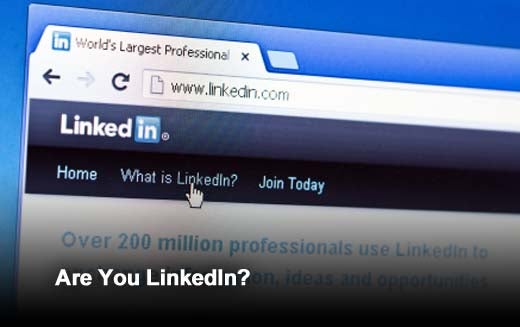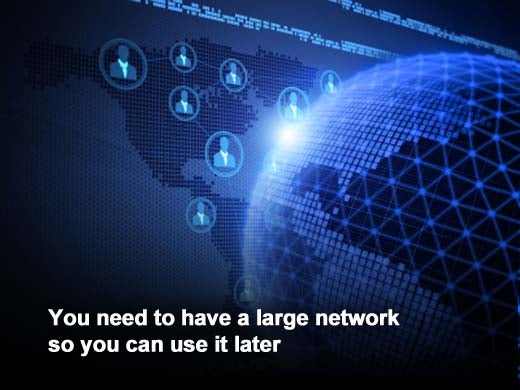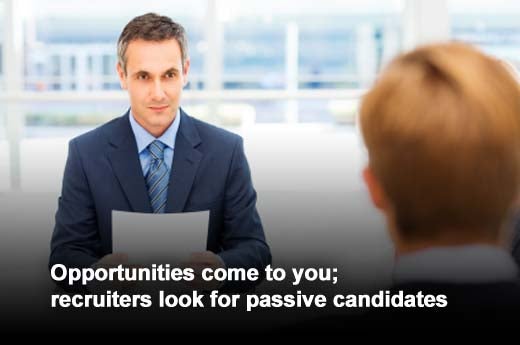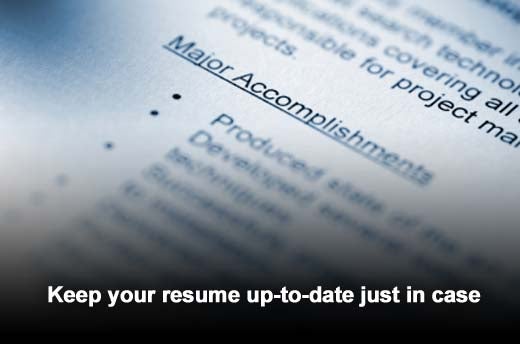A question Joshua Waldman, author of Job Searching with Social Media For Dummies, frequently gets when training job seekers on using social media is “Won’t my boss think I’m looking for another job if I’m using LinkedIn?”
With over 180 million LinkedIn users in the world, he honestly doesn’t think that even half of them are actively seeking work. More than likely, they are happily employed and happily networking. It is a mistake to think of LinkedIn as a giant job board and your profile as just another resume. The power of any social networking tool is in the actual networking.
So if you are currently employed and not taking your LinkedIn use seriously, you’re making a grave error. Here are five reasons Waldman, writing for the TheLadders, has identified for why you need to be on LinkedIn.
Click through for five reasons you need to be active on LinkedIn, as identified by Joshua Waldman, writing for TheLadders and author of Job Searching with Social Media For Dummies.
Imagine you just got laid off. And you have 10 people in your LinkedIn network. You suddenly realize that you should have invested more in getting to know people. So you start to add people like crazy to your network.
If LinkedIn doesn’t blacklist you for suspicious behavior, then the droves of new people you are inviting to your network will question your intentions. They might think, “I haven’t heard from this guy in 10 years, now all of a sudden he’s lost his job and wants to connect. What does he want from me?”
It’s always better to dig your well before you need to drink from it. If you haven’t been building social equity with your network, you’ll have little to draw from later. So don’t wait until you need it. Build a strong network on LinkedIn now. Be active. Provide value. Stay in touch.
When a company hires a contract recruiter to fill a job requisition, that company isn’t looking for someone unemployed. They wouldn’t need to hire a contract recruiter for that. There are enough unemployed people to fill every single job vacancy in the country. What the organization needs is someone who is not actively looking, called a passive candidate.
In other words, the recruiter is paid to steal and pillage from competitive companies, convince the happily employed person that the grass is greener and get a huge commission from the new hire. Companies who use these types of recruiters are willing to pay you more than what you are making now in order to snatch you away from your cushy job. If you aren’t on LinkedIn, you are reducing your chances of being discovered and having the opportunity to make more money.
Groups on LinkedIn have really matured. Waldman has found that the discussions on groups are more engaging, people are less shy about speaking their minds, and the content is improving in quality. Of course this depends on the group; this is just from his own experience. However, if you find the right groups in which to participate, the value to your network — and the knowledge you’ll gain — is huge.
Not only will you be exposed to news, and new ideas, but you’ll have a chance to demonstrate your expertise through commenting and discussion. Sometime alliances are formed. For example, Waldman was part of a group whose leader would entice you to click links to download some attractive research reports. But in order to download each report, you had to fill out a lot of personal information. He found this practice annoying and said so. Pretty soon, others in the group were agreeing with him. One guy in particular contacted him and they hit it off. Turns out they do similar things, but on separate continents. Thus both of their networks grew stronger.
A resume is a static thing. You write it once when you are actively looking for work. You get your job. Then you forget about it. LinkedIn profiles tend to stay up to date with greater accuracy than any other online profile. Recruiters know this. They know that your profile will be more accurate than your five-year-old resume.
When you keep your profile up to date, writing your new resume will be that much easier. Instead of staring at a blank piece of paper trying to remember your start and stop dates, you’ll just check your profile and know. Look, you never know when you’ll need a resume. Most employment these days is at-will. Your company doesn’t need any reason to let you go tomorrow. Be ready.
The average time spent on LinkedIn is just over four minutes per visit. The company finds this dismal fact upsetting, and does what it can to keep you on. And some of the ways it does that are actually quite good. You can get customized news delivered daily. Based on your industry, the types of articles you share, and who is in your network, your daily news feed is likely going to inform you of things you should know about your job.
On many occasions, Waldman has found trending news items that he was blind to until he saw them on LinkedIn. You can customize how your news is displayed and what categories you are interested in reading about. His favorite is the ability to see what news items are trending in his own network. He likes to know what his peers are reading. Wouldn’t you?








